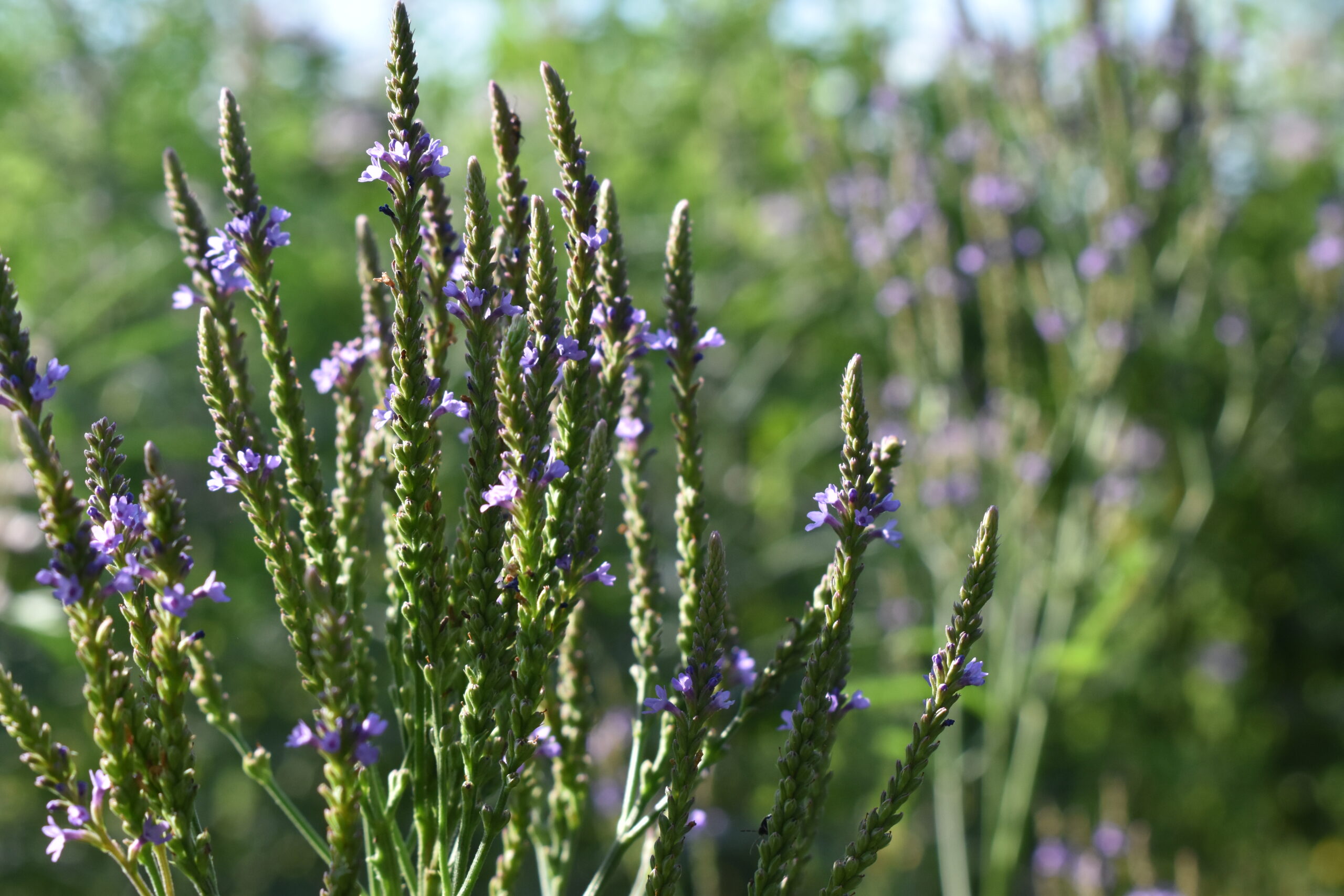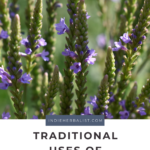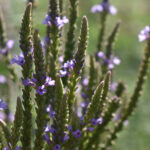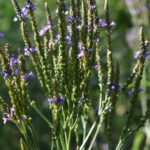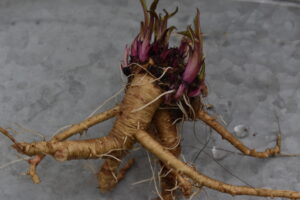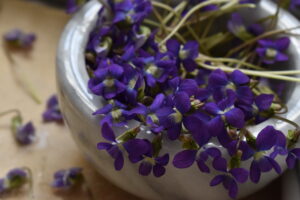Links contained in this post and elsewhere on my website may include affiliate links. When you make a purchase through these links, I earn a commission at no additional cost to you. I only link to products and services that I love - and that I think you will love, too!
Blue vervain (Verbena hastata) is a nervine herb native to eastern North America. It is related to European vervain (V. officinalis), which shares many of the same uses. A common name for V. hastata is Simpler’s Joy. Once you become familiar with this herb, you will see why that’s such an apt description and why I think it’s important for home herbalists.
Interestingly, some early American herbalists were divided on this plant’s usefulness. Some authors, as you will see below, speak well of it. Others state, “There is no reason to suspect it of medicinal virtue” (Remington 1918). Modern herbalists, however, have adopted its use for many reasons.
Personally, I like using it as a nervine and as a bitter. Like many bitters, blue vervain is useful for both digestion and immune function. This is thanks to an affinity for the liver.
An overview of blue vervain
First, let’s talk about it’s bitter nature. This is one of blue vervain’s traditional uses, but it’s important to note that it was used as an emetic in larger doses. Inducing vomitting was once considered an acceptable therapy for certain conditions, so that’s not as odd as it seems at first glance. Normal use shouldn’t cause nausea in most people.
This herb is useful as a diaphoretic (helps the body sweat to break a fever), especially for fevers that come and go or fevers that refuse to break. Most sources state that it is a sudorific rather than a diaphoretic. The difference is in the amount of sweating induced, with sudorifics generally producing heavier sweating.
In my experience, even small amounts can be quite effective as a nervine.
Women’s health and blue vervain
One aspect of blue vervain you might not know is this herb’s affinity for women’s health. It’s an ally for signs of hormonal imbalance like hot flashes and night sweats, either during perimenopause or from PMS.
Wood (2009) points out that signs of progesterone excess or intolerance (stemming from the liver’s ability to handle progesterone) in the second half of the menstrual cycle can be underlying factors for PMS symptoms. Bitters, in general, influence liver metabolism in several ways, so blue vervain’s affinity here is perhaps not surprising.
Because of blue vervain’s nervine/liver link, it’s especially beneficial for emotional or mental intensity in the second half of the menstrual cycle or during perimenopause. This herb may help rebalance the menstrual cycle if it has become irregular and painful because the liver is stressed.
Felter (1922) states that it can stimulate menstruation but doesn’t give any information about it as an emmenagogue. Cook (1869) notes it for the same reason. Scudder (1898) agrees that it is helpful for stopped periods. He also mentions it is useful for promoting healthy lochia after childbirth.
Blue vervain as a nervine
Interestingly, most of vervain’s reputation as a nervine seems to come from the use of European vervain. Most of the resources I found from the 1880s-1900s don’t mention it for the nervous system. However, Hoffman (2003) notes that V. officinalis is a
- nervine tonic
- sedative
- anxiolitic
Many of European vervain’s other uses are identical to V. hastata. Modern herbalist’s here in America tend to use them interchangeably.
Wood (2009) notes blue vervain matches well with intense people with impossibly high standards. They might be struggling with the need to control everything or constantly making lists.
Like European vervain, modern herbalists use small quantities of blue vervain in herbal blends for the nervous system, promoting a restful night of sleep, and taking the edge off stressful situations.
Liver and digestive health with Verbena hastata
Blue vervain’s bitterness made it a traditional digestive and liver remedy. It was often employed for hepatitis and liver cirrhosis. Felter (1922) writes that it is useful for gastrointestinal irritation. Wood (2009) notes that it can settle the stomach in small amounts even though large amounts cause nausea. It was also traditionally used for internal parasites.
Blue vervain during recovery
Another important historical role of blue vervain was its classification as a tonic. This herb was described by several herbalists as being useful during convalescence. Although we often take the ability to bounce back after illness for granted, many of our ancestors were not so lucky. Because of higher risks of malnutrition and because they faced more long-term illnesses than we do, herbs that could support the body during recovery after an illness were highly valued.
Whether we are working with blue vervain as a nervine, to support the liver, or strengthen vitality after a long illness, Simpler’s Joy is an important herb from the American Eclectic herbal tradition that deserves a revival.
References
Cook, W. (1869) The physiomedical dispensatory. https://www.henriettes-herb.com/eclectic/cook/VERBENA_HASTATA.htm
Felter, H.W. (1922). The Eclectic material medica, pharmacology and therapeutics. https://www.henriettes-herb.com/eclectic/felter/verbena-hast.html
Hoffman, D. (2003) Medical herbalism: the science and practice of herbal medicine. Healing Arts Press.
Remington, J., Wood, H., (1918) The dispensatory of the United States of America. https://www.henriettes-herb.com/eclectic/usdisp/verbena.html
Scudder, J. (1898) The American Eclectic Materia Medica and Therapeutics. https://www.henriettes-herb.com/eclectic/scudder1898/verbena.html
Wood, M. (2009). The Earthwise Herbal, a complete guide to New World medicinal plants. North Atlantic Books.
